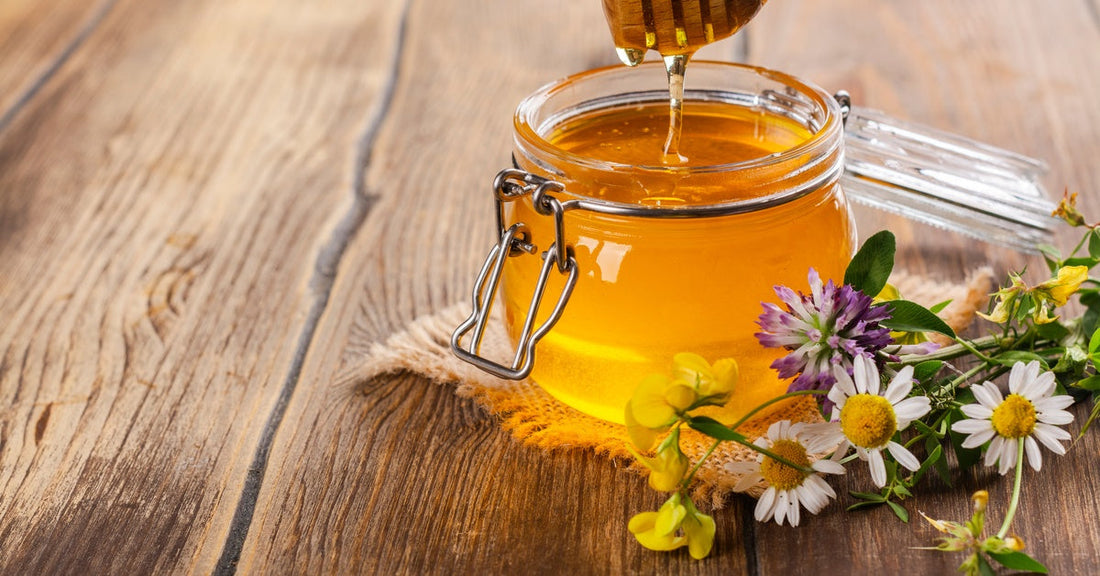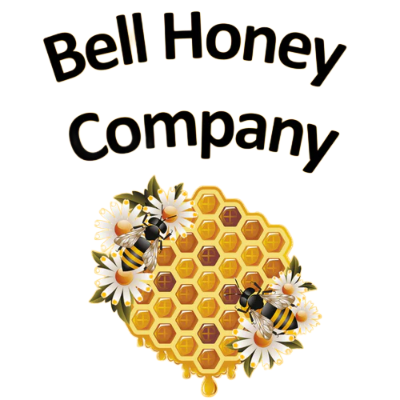
Why Raw Wildflower Honey Outshines Processed Varieties
Share
You stand in the grocery store aisle, scanning shelves lined with golden jars. One jar catches your eye—raw wildflower honey.
Its rich, dark color and natural specks hint at something special, something unprocessed and pure. Unlike processed varieties, raw honey has all the nutrients and flavors nature intended, making it far more than just a kitchen staple. Choosing raw wildflower honey means choosing quality, authenticity, and a product that brings natural goodness to every spoonful.
Better for Your Body
Raw wildflower honey retains more nutrients compared to processed honey. While they often heat regular honey to improve texture, this process can reduce some of the beneficial compounds that make honey unique.
All Nutrients Still Intact
Heat treatment eliminates vitamins, minerals, and enzymes that your body craves. Raw wildflower honey preserves these delicate compounds because it never sees temperatures above what bees naturally maintain in their hives. You get vitamin C, B vitamins, calcium, iron, and potassium in their original forms.
Ample Antioxidants
Raw wildflower honey is a powerhouse of antioxidants, including flavonoids and phenolic acids. Antioxidants are natural compounds that protect your body from free radicals—unstable molecules that can damage cells, contribute to aging, and even lead to chronic diseases.
Unlike processed honey, raw varieties retain these protective compounds, making them more effective at supporting overall health. Incorporating raw wildflower honey into your diet can give your body an extra defense against oxidative stress while also offering a naturally sweet treat.
Packed With Pollen
Those tiny specks you notice in raw honey? That's pollen. Local pollen may help your body adapt to environmental allergens. While scientific evidence remains limited, many people report reduced seasonal allergies after regularly consuming local raw honey. Eating raw honey is a natural way to potentially support your immune system and ease allergy symptoms.
Processing removes pollen completely, stripping honey of this potential benefit. Raw wildflower honey, however, preserves these microscopic powerhouses. Wildflower honey typically contains pollen from a variety of local plants, offering a diverse blend that mirrors the allergens in your environment.
Helps Your Heart
Raw honey supports cardiovascular health in several ways. Its antioxidants help protect blood vessels from damage, and its natural sugars provide energy without causing the inflammatory response associated with refined sugar. The enzymes and nutrients in raw honey further enhance its heart-friendly properties compared to processed alternatives.
Supports the Immune System
Raw wildflower honey contains compounds that support immune function. Its natural antibacterial properties come from enzymes that produce hydrogen peroxide, along with other antimicrobial substances that processing diminishes or destroys.
The diverse plant sources in wildflower honey create a complex blend of immune-supporting compounds. Each flower contributes unique properties, resulting in honey with broader therapeutic potential than single-source varieties.
Offers a Natural Source of Energy

Your body processes raw honey's natural sugars differently than refined sweeteners. The combination of fructose, glucose, and other simple sugars provides both immediate and sustained energy without the dramatic blood sugar spikes that processed sugars cause.
Raw honey's enzymes aid digestion and absorption, allowing your body to utilize its energy more efficiently. Athletes often choose raw honey for pre-workout fuel because it delivers clean, sustained energy without digestive upset.
Created With Good Environmental Practices
Beyond personal health benefits, raw wildflower honey also outshines processed varieties by supporting environmental sustainability in ways that mass-produced honey cannot. Wildflower varieties celebrate biodiversity rather than fighting it.
Commercial honey operations often focus on single crops such as clover or orange blossoms, requiring large monoculture plantings that deplete soil nutrients and reduce habitat diversity. Wildflower honey comes from bees that forage across varied landscapes, visiting dozens of different plant species.
This diversity benefits both bees and ecosystems. Bees enjoy varied nutrition from different flowers, making colonies healthier and more resilient. Meanwhile, their pollination supports native plant communities, maintaining the complex web of relationships that healthy ecosystems require.
Raw wildflower honey producers typically maintain more natural beekeeping practices. They avoid excessive intervention, allow bees to build natural comb, and harvest honey without disrupting colony health. These methods produce superior honey while supporting bee populations that face increasing pressures from pesticides and habitat loss.
The True Taste You Love
Flavor tells the story of raw wildflower honey's superiority. While processed honey tastes uniformly sweet with little complexity, raw wildflower honey offers layers of flavor that change with each jar.
Processing eliminates the subtle compounds that create honey's distinctive taste. Raw honey preserves volatile oils, trace minerals, and other flavor components that heat destroys. The result is honey with depth, character, and a finish that lingers pleasantly on your palate.
Wildflower varieties change seasonally as different plants bloom. Spring honey might carry hints of fruit tree blossoms, while summer varieties reflect wildflower meadows and late summer brings deeper, more robust flavors from autumn blooms. Each jar tells the story of its landscape and season.
This complexity enhances everything you add honey to. Raw wildflower honey elevates tea, transforms yogurt, and creates depth in baked goods that processed honey simply cannot achieve. Chefs increasingly specify raw honey in recipes because its nuanced flavors contribute to sophisticated dishes.
No Need to Look for an Expiration Date

Processed honey often includes expiration dates because added moisture or contaminants during processing can encourage fermentation. However, raw honey is different. Its natural antimicrobial properties and low moisture content protect it from bacteria and mold, allowing it to last indefinitely when stored in a cool, dry place.
You don’t have to worry about replacing it, even if it stays on your shelf for years. Crystallization might occur over time, but that doesn’t mean the honey has gone bad. Crystallization is a natural process that can be easily reversed by warming the jar gently in hot water.
A pantry staple, you can buy raw wildflower honey in bulk without worrying about waste, which often lowers the per-ounce price. Plus, having a steady supply of this nutrient-rich sweetener ensures you’re covered for everything from tea and baking to soothing sore throats or boosting energy naturally.
Make the Switch to Nature's Perfect Sweetener
Now you know why raw wildflower honey outshines processes varieties. Your body deserves the full spectrum of nutrients that raw honey provides. Your taste buds will appreciate the complex flavors that tell stories of meadows and seasons. Your conscience can rest easy knowing you support sustainable practices that help both bees and environments thrive.
Ready to experience it for yourself? Bell Honey's raw wildflower variety captures all these benefits in every jar. We harvest our honey with care, preserve its natural goodness, and deliver the authentic honey experience that nature intended. Stock your pantry with honey that actually honors what bees worked so hard to create.
